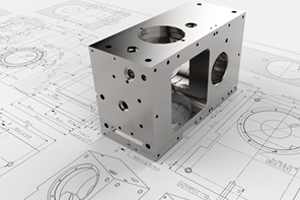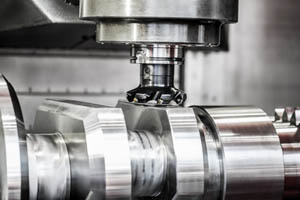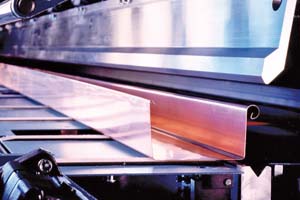General Forms of Gutters
Half-Round Gutter
- Description: Also known as a half-round gutter.
- Advantages: Good self-cleaning function due to the half-round shape.
- Usage: Suitable for both traditional and modern buildings.
- Variants: Half-round gutter bottom, half-round gutter, half-round roof gutter.
Box Gutter
- Description: Has a rectangular or square shape.
- Advantages: Offers a greater water intake capacity.
- Variants: Square with flange, box gutter, box gutter systems.
Quarter-Round Gutter
- Description: A quarter-circle in cross-section, also known as a bead gutter.
- Usage: Often used in older or historical buildings.
Ogee Gutter
- Description: Has an S-shaped, decorative edge.
- Advantages: Combines traditional aesthetics with functionality.
- Variants: Ogee gutter bottom.
Eaves Gutter
- Description: Attached directly to the eaves (the lower edge of the roof).
Internal Gutter
- Description: Installed within the roof structure.
- Advantages: Invisible from the outside.
Special Forms and Systems
- A-Model Gutter: A special form that is aesthetically pleasing and functional.
- V-Model Gutter: Another special form for specific roof types.
- Mastgoot Gutter: Traditional Dutch form.
- Bakgoot Gutter: Rectangular form, often used in the Netherlands.
- Modeled Gutters: Decorative and specially shaped gutters.
- Hungarian Bead: Traditional design with a distinctive bead pattern.
- Berlin Form Gutter: A special form popular in certain regions of Germany.
- Shapes from SMACNA: Shapes like K-STYLE, defined by the Sheet Metal and Air Conditioning Contractors' National Association.
- Half-Round with Flange: Half-round gutter with a flange.
- Kilgoten and Galecoo: Special gutter systems.
Industry Standards and Norms
- DIN EN 612: The standard for gutters in Germany. Key points:
- Materials: Describes permissible materials for gutters and downspouts, such as zinc, copper, aluminum, stainless steel, and plastic-coated metals.
- Dimensions: Specific dimensions and tolerances for various parts of gutters and downspouts, including nominal widths (DN).
- Installation: Guidelines for proper installation and fastening of gutters and downspouts to ensure proper rainwater drainage.
- Maintenance and Inspection: Recommendations for regular maintenance and inspection to ensure functionality.
- Accessories: Specifications for accessories such as gutter hooks, connectors, corner pieces, and end pieces.
- Other DIN Norms: DIN 200, DIN 250, DIN 280, DIN 333, DIN 400, DIN 500.
Machines and Tools
- Gutter Machines and Automation:
- Types: Gutter machine, gutter automation, gutter machine.
- Other Machines: Seamless gutter machines, aluminum gutter machines, steel gutter machines, metal gutter machines.
- Special Machines: Gutter forming machines, roll-forming machines, rain gutter machines, CNC gutter machines.
- Other Types: Portable gutter machine, channel forming machine, gutter profile machine.
- Categories: Individual gutter machine, industrial gutter machine, automated gutter machine.
Drainage and Accessories
- Rainwater and Drainage Systems: Rainwater systems, drainage systems, roof drainage systems.
- Accessories:
- Gutter: A half-round or box-shaped gutter installed along the eaves of a roof to catch and direct rainwater.
- Downspout: A vertical pipe that directs water from the gutter to a drainage system or a soakaway.
- Gutter Brackets (or Hooks): Brackets used to attach the gutter to the eaves.
- Gutter Outlet (or Drop Outlet): A connector that joins the gutter to the downspout and directs water into the downspout.
- Gutter Corners: Corner pieces used to guide the gutter around a building corner.
- Gutter End Cap: A closure element that seals the end of the gutter.
- Rainwater Collector: A device connected to the downspout to collect rainwater, e.g., in a rain barrel.
- Leaf Guard: A mesh or cover that prevents leaves and other debris from entering the gutter and causing blockages.
- Eaves: The lower edge of a roof, where water flows into the gutter.
- Parapet: A low wall or railing on the edge of a roof, often on flat roofs, used to attach gutters or drainage systems.
- Roof Pitch: The angle of the roof to the horizontal, important for calculating the amount of rainwater to be drained.
- Siphon: A device integrated into the downspout to prevent odor escape and possibly the entry of animals.
- Roof Drain: A drainage opening, particularly used on flat roofs, to direct rainwater from the roof surface to the drainage system.
- Emergency Overflow: An additional drainage device used during extreme rainfall to prevent overloading of the regular drainage system.
- Snow Guard: A device that prevents snow and ice from sliding off the roof uncontrollably and damaging the gutter or endangering people.
- Gutter Inlet: The area of the gutter where water enters the downspout.
Find further information about our guttermachine: Dachrinnenmaschine











